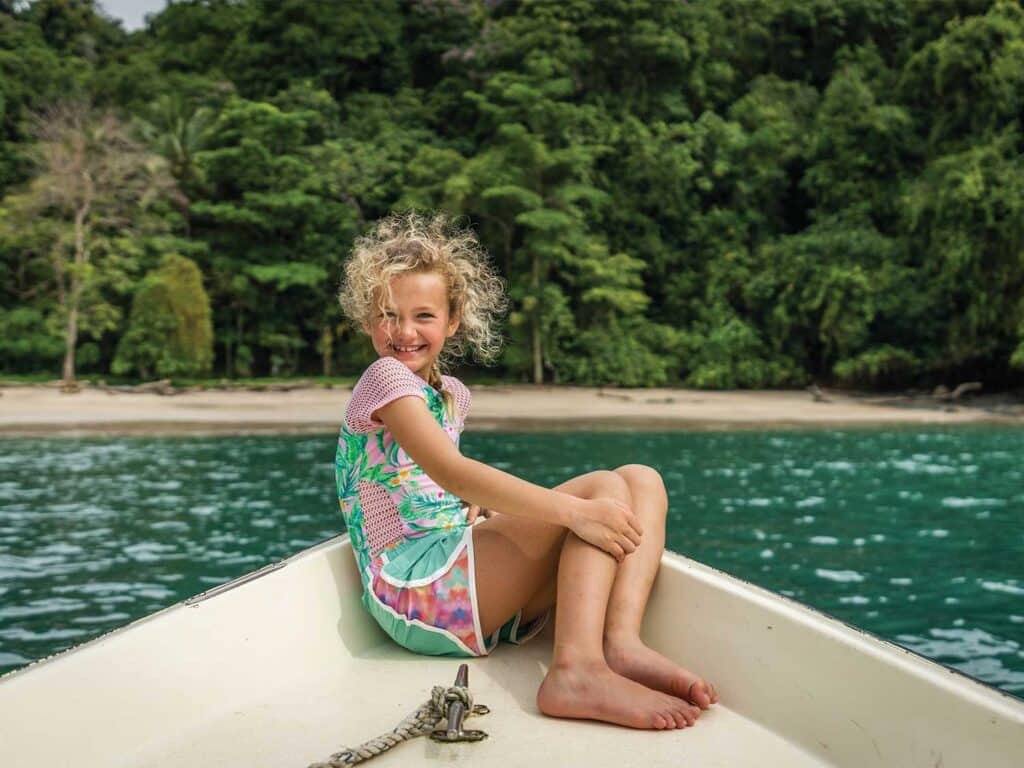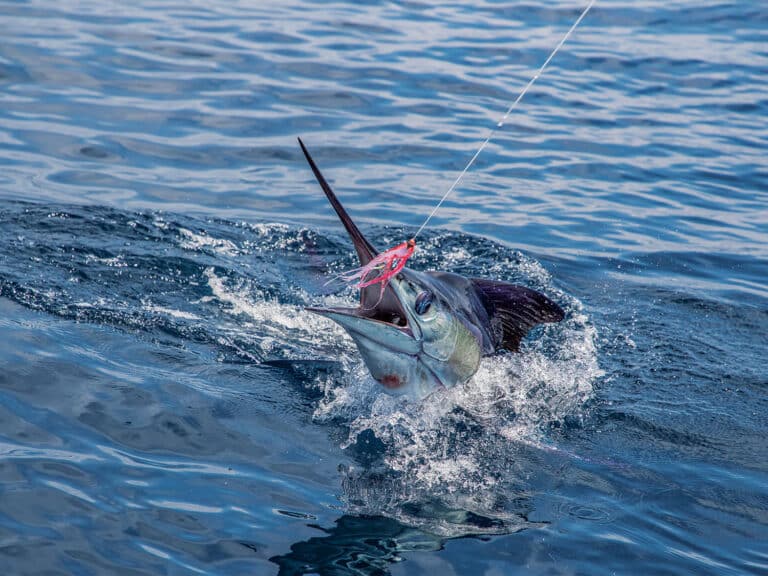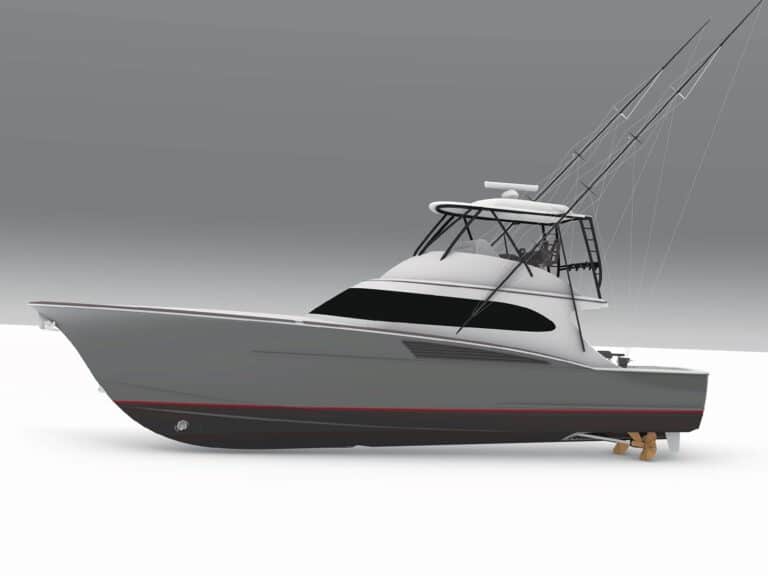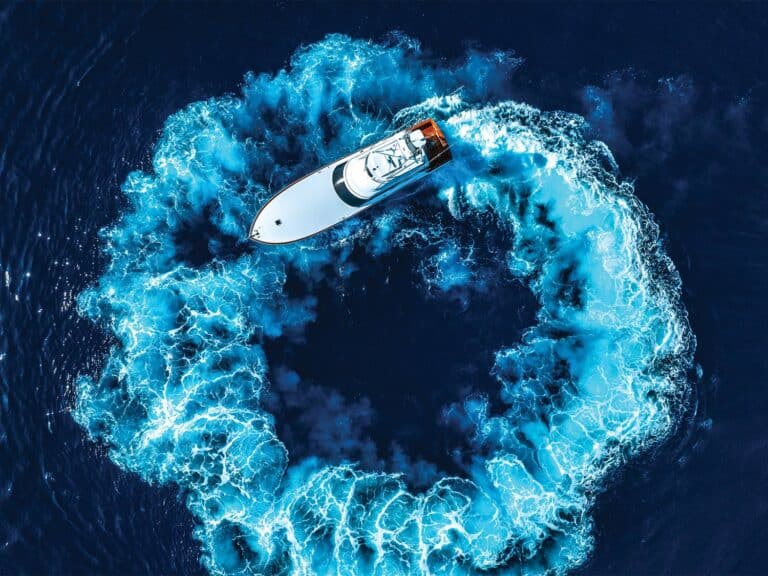
Special delivery: Sign up for the free Marlin email newsletter. Subscribe to Marlin magazine and get a year of highly collectible, keepsake editions – plus access to the digital edition and archives.
There are many people in the fishing industry who continue to impress me with their knowledge, drive and passion. However, something that is less common in this everyday life is the realization of how children are naturally drawn to fishing. Perhaps it’s the wonder of the environment and being somewhere that is unfamiliar. Maybe it’s the excitement of seeing a fish in real life and not just from a picture book. But to me, I think it’s the sheer joy that children bring to us. They light up our lives, and even in the darkest of nights, a child’s giggle awakens the human soul.
As adults, particularly those who are professionally engaged in the fishing lifestyle itself, we can get somewhat jaded by it. We see it—and live it—every day, and what once was true admiration and wanderlust becomes less impressive and even a chore at times. This is why we need children in our lives and in our sport. We need them to remind us that innocence does still exist, and for us to remember what we once felt. And while the shininess of fishing might become a little dull at times, it never really fades away. It’s an addiction. The angler’s connection is far deeper than one paragraph can explain, but having a little whirlwind cross your path at Tropic Star Lodge in Panama, especially one named Mabel Sharpe, reconnected everyone around her. Her light was electric, and her energy was utterly infectious.
The Ropes
We headed out hoping to see Mabel, with only seven fantastic years of life experience under her belt, catch her first sailfish. At Tropic Star, the average age of the fishermen we meet is undoubtedly 40-plus. Often they are humble, mature men who have worked their entire lives, and they are not particularly boisterous characters. My better half and colleague, Hannes Ribbner, had been booked previously to go fishing with his buddy Dr. Clifton Cannon in mid-June, but luckily for me, Cannon also decided to book me for this trip. This family was on a mission, and he wanted it to be completely documented.
While Hannes handles the long lens, I focus on the wide angles to capture more of what’s happening around the boat: the raw emotions, the sweat and the struggles. That way, we can cover all the bases and capture everything. While I was shooting more like a photo album, his job was to get those perfect jump shots, to provide our clients with the kinds of photos they proudly hang above their desks and brag about to their friends.
As if on cue, Miss Mabel, the star of the show, complete with bright-red lips and a handbag slung around her neck, came bopping down the pier. In her hand, she held a “winner’s breakfast,” she said, which was a lollipop with a bit too much food coloring, causing her entire mouth to be stained. Her golden curly hair bounced off her shoulders as she gazed out at what would become one of the craziest days of her life, although she didn’t know it yet.
Between the bridge and cockpit deck of Pollyanna, Mabel found the ladder. To her, the ladder was incredibly fun, especially for an energetic 7-year-old, as she bounded from the bridge to the cockpit and back again while we were baitfishing. As soon as a baitfish was hooked, she practically threw herself off the bridge to reel it in. However, the bonitos were quite scary, so standing too close to them while they dangled out of the water was far too frightening for her. But once the bait was secured in the tuna tube, she shot back up to the bridge at such a speed that all our hearts stopped to wait for the next one. Be careful, little one, I thought, as we picked up to run to the fishing grounds.
The Adventure Begins
The sea was calm and behaving nicely that day. The so-called rainy season had been taking it easy on us, and the tournament held the week before had yielded good results, with several boats coming in with double-digit release numbers. The best bite was south of Piñas Bay toward Colombia, so that’s where we were heading.
Our adventure began just 3 miles from the Colombian border. We set out our four teasers and readied the baits; the instant a fish showed its bill, we needed to be quick, switching the fish from the teaser before he lost interest. The extremely boring—as you can imagine for a young girl—wait began. Mabel would have preferred to have caught at least three by now, I’m sure, but luckily her mother, Jenny Cannon, brought along a sketchbook to keep her occupied. As we trolled along at 8 knots, the dolls in Mabel’s sketchbook were colored with precision, Mabel not daring to color outside the lines even once. She was focused on that task, but her focus would soon be broken by the inherent panic that arrived after what seemed like hours of boredom.
Mabel didn’t have time to change the color of her pencils more than a few times before there was chaos on deck. The first fish of the day had shown interest in us, and it was time to get to work. Our mates, Christiaan Kruger and Carlos Mosquera, worked well as a team and did their best to remove the teaser and redirect the fish’s focus to the bait. And while some attempts are successful, others end in defeat. This time, unfortunately, we were defeated, at least with the first fish of the day. But, luckily for us, that fish brought its friends.
In a nanosecond, several bills broke the surface at the same time, making it difficult to choose which one to focus on first. Before a bait even hit the water, Mabel was in the fighting chair. Jenny acted as her assistant, holding up the heavy rod so that Mabel could turn the handle. Then we were hooked up, and the rod was immediately passed to Mabel. It was her time to shine, and she was ready to land the fish that she had come to Panama to catch. Another thought flitted through my consciousness: Go, Mabel, go!
Capt. Fidel Mosquera handled the boat like a pro, as he always does, and as soon as all of the other lines were out of the water, he began to jockey the boat to slowly approach the fish. This is a technique that usually shortens the fight, and while everything was happening, we were treated to an amazing sailfish show. The fish’s sail was fully out, and it leaped around the ocean in the most beautiful positions, almost as if it were fully aware that Mabel was watching him, as if he were performing just for her. It was truly the kind of fish that you dream about every night as a photographer, and the kind of fish that makes the job so incredibly enjoyable.
Unicorns and Rainbows
With tears of pride, I heard Hannes’ camera feverishly snapping away as I focused on trying to capture the hunger in the eyes of this little girl who somehow instinctively knew what to do. That’s when I saw it. Cliff, Mabel’s stepfather—or “bonus” father, as she calls him—was filming everything with his phone. From underneath his sunglasses, his own tears were streaming down his cheeks. Pride overflowed in him, and he couldn’t control it. The moment was so thick with accomplishment and happiness that you could cut it with a knife.
What followed is difficult to explain. As the fish came closer to the boat, it was essential to handle it as gently as possible, as we do with all the fish we catch at Tropic Star. But the sails here are much larger and stronger than in other parts of the Pacific, and as soon as you touch their bills, they tend to go crazy. Because there are millions of nerves concentrated in that small area, it’s understandable that touching it would make them go mad. So, with exceptional care, Carlos grabbed the bill, and Mabel leaped from the chair, almost throwing herself over the covering board to see her fish. Jenny was on point, thankfully, as any mother would be, and was quick to grab her around the waist to keep her from falling. I don’t know if anyone had taught her how to hold on to the sail for a picture, but her arm reached as far as it could to touch her fish.
She was ecstatic. We all were, smiling from ear to ear, giving one another high-fives and everyone hugging everyone in a sea of cockpit humanity. And, of course, more of Cliff’s tears made their way down his cheeks. Mine did too.
It’s a tremendous honor to be part of someone’s first sailfish catch—as a photographer, as a parent, and as a captain. The first fish is always remembered. As for Miss Mabel, well, this was just another chapter in her under-10 life filled with rainbows and unicorns. She jumped into the cockpit that morning and began swinging around like a monkey, but as this monkey show continued on throughout the day in front of us, there was constant laughter and bragging. Bragging about the fish she had just released. A bragging that was entirely fine. And in the midst of it all, she asked, “Cliff, can I catch another one?”
We had another addicted fisherman on our hands, I surmised, one who passed the time by coloring dolls in her sketchbook and ended up with a catch of a lifetime—for Mabel’s parents and for her.
What an especially fun day it was. One that I’d like to live again and again. If this isn’t the future of fishing, then I don’t know what is. More rainbows and unicorns for everyone, I say. I can’t wait to go fishing with Mabel again.







